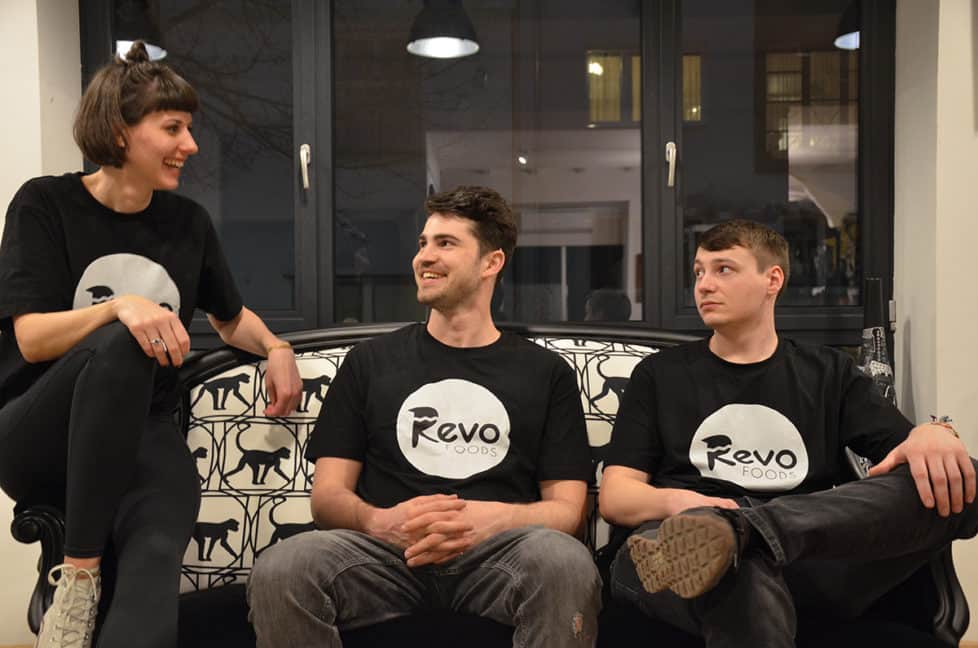Vegan meat alternatives have already become suitable for the masses. Now a startup from Vienna can also produce vegetable fish - using 3D printing.
Vegan burgers, sausages, meatballs and the like are already conquering the supermarket shelves. They are changing from an expensive niche product to an affordable everyday food. The meat alternatives have long ceased to be bought solely out of love for animals.
Climate protection and resource conservation are other important motives for choosing vegan foods. The same applies to fish, because overfishing of water bodies is a massive threat to the global ecosystem and transport routes are often long. Around 60 percent of the marine animals consumed in Europe are imported from abroad. Aquaculture and fish farming are supposed to prevent this, but these alternatives bring new problems, such as uncontrolled algae formation or high energy consumption. So the time seems to be ripe for vegan fish too. Vegan fish fingers and soy canned tuna are already available to buy. Vegetable fish substitutes for sushi or fried salmon steak, on the other hand, are new.
Vegan fish is kind to the environment and is healthy
In Vienna the foundersinside and scientistinside Robin Simsa, Theresa Rothenbücher and Hakan Gürbüz with the company REVO their vision of the vegetable fish fillet made true. The vegan salmon comes from the 3D printer. In this way, not only the taste can be reproduced true to the original, but also the appearance and texture, because the printers can build up complicated structures from different materials layer by layer.

Simsa on the background of her innovation: “We had already worked on 3D bioprinting in the academic sector for three years and saw great potential for the manufacture of meat substitute products. Furthermore, there are already many vegan hamburgers and sausages, but hardly any products in the fish sector. We wanted to change that. We are committed to healthy and sustainable seas, as the collapse of fish populations would also have catastrophic consequences for human nutrition. "
Vegan fish with natural ingredients
The developers do not want to do without valuable ingredients. Simsa explains, “The nutritional values of fish are very important, but unfortunately the nutritional values of aquaculture salmon have deteriorated over the past few decades. Now even synthetic omega-3 and artificial coloring must be mixed into the salmon feed so that aquaculture salmon look like wild salmon. We only use eleven natural ingredients. Our products have a high protein content and omega-3 fatty acid content. "
For example, avocado and nut oil as well as vegetable protein, for example from peas, are used in vegan salmon. This means that the fish substitute should be in no way inferior to its animal model in terms of a healthy diet. On the contrary: A major advantage of printed food compared to real fish is that it does not contain traces of harmful chemicals or antibiotics, heavy metals or microplastics.
The fish substitute should not only taste good to vegans: “We ourselves are mixed - vegan, vegetarian but also meat eaters. We don't exclude anyone who works for a better world, ”says Simsa. Revo Foods (formerly Legendary Vish), based in Vienna's 7th district, is already working on other vegan fish alternatives. As soon as the production of vegetable salmon fillets is ready for the mass market, vegan tuna will be ready for the market.
Artificial meat from 3D printer
The same is true for the meat of the future: The billion dollar IPO of “Beyond Meat” was just the beginning. According to a study by the international management consultancy AT Kearney, up to 2040 percent of meat products will no longer come from animals by 60. This also represents hope against climate change, as animal husbandry is responsible for a high proportion of the CO2 emissions.
A lot has happened since the first tasting of a grown burger in 2013. According to the Dutch food technology company Mosa Meat, it has now been possible to grow meat in large bioreactors with a capacity of 10.000 liters. Nevertheless, the price of a kilo of artificial meat is still several thousand dollars. But that could decrease significantly in the next few years if processes for mass production are mature. "At a price of $ 40 per kilo of art steak, laboratory meat could become mass-produced," says Carsten Gerhardt from AT Kearney. This threshold could be reached as early as 2030.
Photo / Video: Shutterstock, REVO.



